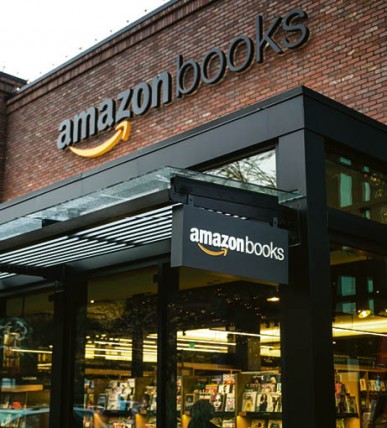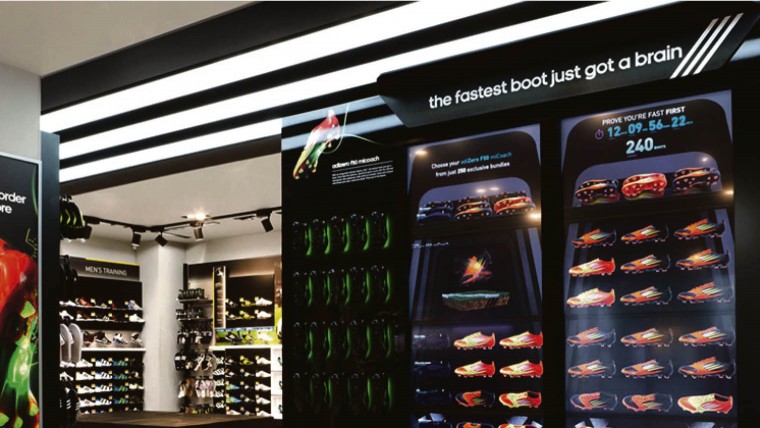At the start of May, online shopping platform notonthehighstreet.com celebrated its tenth anniversary by going against the habit of its lifetime and selling products offline.
It held a three-day pop-up physical shopping experience in London’s Spitalfields Market, allowing customers to step through eight interactive “doorways” into the various shopping categories it uses in its online store. The small businesses that sell on the platform were able to meet and greet shoppers like never before, and the platform offered master classes in the likes of tea mixology and calligraphy.
The move is part of a growing trend of internet-native businesses creating physical stores. Online furniture retailer Made.com went from clicks to bricks by opening a showroom in central London in 2014 and even Amazon, the world’s biggest online retailer, opened a physical bookstore in Seattle last November.
Engaging and exciting
Yet online sales in the UK are expected to keep rising – by 11 per cent this year to £126 billion, according to the IMRG Capgemini e-Retail Sales Index. So rather than signalling a U-turn on e-commerce, the trend could be indicative of a change in the role of physical stores.

Internet-native businesses such as Amazon have begun to open physical bricks and-mortar stores
“You just have to look at the rising rents paid by retailers in locations such as Regent Street and Oxford Street to understand the importance of flagship stores to retailers,” says Eric Fergusson, director of retail services at eCommera. “However, the role of bricks-and-mortar stores is changing, and the benefits of making the in-store shopping trip a unique and engaging experience are plentiful. Stores are becoming leisure destinations, as much about engagement and excitement as making product inventory available.”
Physical stores are also becoming brand-building exercises as much as anything else. For notonthehighstreet.com, which is famous for its handmade products, offering craft master classes is a case in point. Luxury Danish audio company Bang & Olufsen is another example of a company using its stores to tell a brand story. Its flagship Mayfair store has been designed to offer an oasis of calm, where shoppers can relax.
Stores are becoming leisure destinations, as much about engagement and excitement as making product inventory available
“Our customers generally live such a fast-paced life, so staff want to make sure that when they step into the store, their time feels valued and they are welcome to come down a gear and forget time for a moment,” says Simon Silva, Bang & Olufsen’s global customer experience manager. “Little touches like having sofas and coat racks sends the message that you are welcome to spend time in a store and relax. The new concept delivers a sensory experience through sound and design with a dedicated revolving speaker wall and immersive demonstration zones.”
Creating spaces that consumers want to spend time in is a common theme. Trailblazer Apple has been welcoming the public into its stores to browse the internet for years, not batting an eyelid at those who clearly aren’t in the store to buy. This is something that mobile giant O2 is moving towards with its latest flagship stores in Manchester and London’s White City.
“We ripped up the rule book of a traditional mobile phone shop and set out to create inspiring and creative spaces where people can come to experience and learn about the possibilities of technology, not just buy a mobile phone,” says Bridget Lea, head of stores at O2. “With complimentary coffees, spaces to work and relax, as well as the latest tech, we want people to spend time in these stores and come back regularly, whatever network they’re on.”
Technology for engagement
If on one hand retailers are creating spaces where people can spend their downtime, on the other hand they are utilising technology to engage customers when they’re in-store. As a result of cutting edge technology, shoppers are getting real-time information, tailored offers, shareable moments and greater choice while in-store.
One such example is adidas’ use of what it calls “endless aisle technology”, which allows shoppers to see more trainer options than are actually available in store on that day. This tackles the age-old bricks-and-mortar challenge of stock space.
“A couple of years ago, the German-based company realised that while it was impossible for any of its retailers to carry a full selection of adidas shoes, it was losing sales simply because shoppers were unaware of all the offerings available,” says Kerry Lamos, chief executive of Retail Pro International. “Of course, customers could purchase online, but many didn’t because of their desire to test shoes for fit before purchasing.

Adidas customers are able to see more trainer options than are available in store
“With endless aisle technology in stores, shoppers can try on shoes that are physically present in stores and then use the technology to see all of the other varieties available to them.” According to adidas, the installation of the endless aisle has led to a 40 per cent increase in footwear sales.
Another great application of technology in-store is the use of beacons. These are small wireless devices which send Bluetooth signals to mobile phones in the general area. It means that stores can identify certain customers in their stores and send personalised offers to shoppers.
“Beacon technology can enable retailers to gain critical visibility into a customer’s in-store shopping behaviour,” says Mr Lamos. “By integrating customer data from all of your channels, you can connect the dots between their activity in your web store and on your sales floor. Using this combination of data, retailers can personalise the offers and product suggestions they send in-store via beacons to match what customers have already been considering.”
Urban Outfitters in one such retailer. The clothing store has implemented Google-enabled beacons into its concept store which are able to give opted-in shoppers personalised notifications. They take into account any social media check-ins in-store, any activity such as scanning a barcode in the Urban Outfitters app or shopping history to give people an offer they are likely to be interested in.
“Urban Outfitters also encourages social-sharing of this personalised experience,” says Mr Lamos. “After all, it’s a personalised experience because it is theirs and theirs alone – and customers share pictures of their purchase on Instagram with #UOonYou.”
By tapping into existing customer behaviour, such as social-sharing, the brands get their message shared in an organic way – a recommendation on Instagram or Facebook is often more powerful to users than a marketing campaign.
“Generation Z have been brought up in a digital world with social-sharing and online communities part of everyday life,” says Simon Norris, chief executive of strategic user-experience design agency Nomensa. “As such, in the era of the selfie, brands that create interactive in-store experiences supported by digital and tech will transform shopping moments. Stores that understand the importance of blended experiences will be those that dominate.”
Innovation
One of the clever technologies inside retailers’ apps is from a company called Slyce. It has created image recognition software, which can be built into apps and used to scan images, posters, barcodes and price tags to prompt further information.
“Our retailing clients are putting the technology to really cool uses,” says Slyce president Ted Mann. “People can activate posters by scanning them to get further pricing, availability information or to enter competitions. Just yesterday we were building a prototype which could scan a video playing in-store.”
It’s these kinds of interactions that are enriching the in-store experience for people. According to research by Brightcove, around four in five UK shoppers (77 per cent) agree that visual stimulus, through interactivity, video and photography, enhances their shopping experience and influences them to make a purchase.
“As younger consumers gain more buying power in the coming years, these elements will become increasingly important as tools to engage these digital-natives, who naturally prefer online to on-the-street shopping in physical retail environments,” says Sophie Rayers, director of marketing for Europe, the Middle East and Africa at Brightcove. “So whether it’s interactive dressing rooms, holographic personal shoppers or intelligent online baskets that appear in-store, one thing is for sure – high-tech is coming to a high street near you soon.”
Engaging and exciting

Technology for engagement

